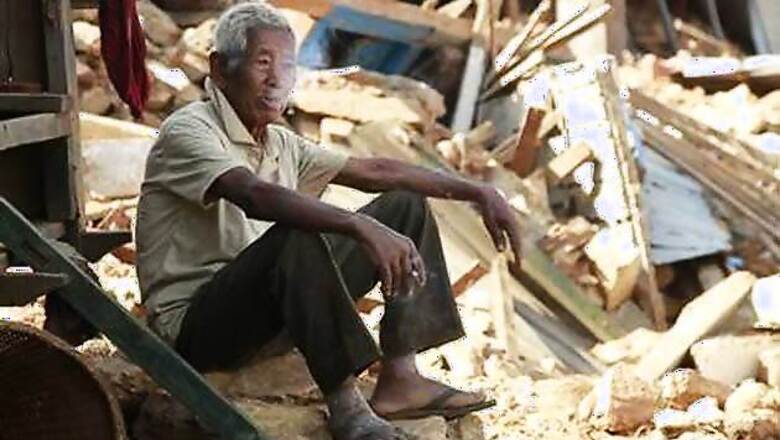
views
Pokharidanda: He was 9 years old when he felt the earth tremble for the first time. He'd been out in a field, grazing his goats on wild grass below Nepal's snow-covered peaks.
"The earth started shaking," said Fattha Bahadur Rana, who at 90 years old is now the oldest man in this demolished farming village not far from the epicenter of the deadly April 25 earthquake.
"I was a kid, I was scared. I saw everyone screaming, and I heard a loud roar." He lisps a little, because he has just two teeth left. "I thought that a plane had crashed from the sky," he said.
It was 1934. Hitler was on the rise in Europe, America was engulfed in its Great Depression, and Nepal was a sleepy, feudal Himalayan kingdom at the northern fringes of the British Empire.
Rana had become the man of his house a year earlier, after his father died in Kathmandu, the capital. He never learned the cause. He only knew it was up to him to help his mother and little brother on the farm.
The 1934 quake had a magnitude of 8.0. The epicenter was more than 200 kilometers (120 miles) away, near the Nepal-India border, and in Pokharidanda it did little more than frighten the villagers. In those days, news traveled slowly, but eventually they learned what had happened.
More than 10,000 people had died and entire towns and cities had been smashed to the ground. "Kathmandu was demolished," said Rana. "The king and queen, they were crying."
This time, he was not so remote. The epicenter of the recent quake was perhaps a couple of dozen kilometers (miles) away. But having experienced it once, he knew what the tremors could do. He threw aside the book he'd been reading and scrambled away from the stone house he had built with bare hands, seconds before it came crashing down.
"I thought it was the end of the world. I thought I would die," Rana said. "But now how will I live? I've lost everything." All 30 of Pokharidanda's homes are demolished.
Miraculously, all its residents survived the quake. Few Nepalese remember the 1934 quake. To have lived so long in Nepal is a feat in itself. Life expectancy today is just under 68 in the mountainous nation, and was maybe half that in 1925, when Rana was born.
His life has been otherwise typical for Nepalese villagers. At 16, he married, and soon after joined the army. He had four children and after his wife died he married again at age 32.
More children were born, and then grandchildren and great-grandchildren. The village grew.
Now, he and his 82-year-old wife life on handouts and sleep in a flimsy shelter villagers made from corrugated tin set beneath the tumbling boughs of a fiery pink bougainvillea.
"I don't know what will happen next," he said, cupping a cigarette to his lips and gently pulling in. "But this is where I am now. I have to live somewhere until I die."




















Comments
0 comment